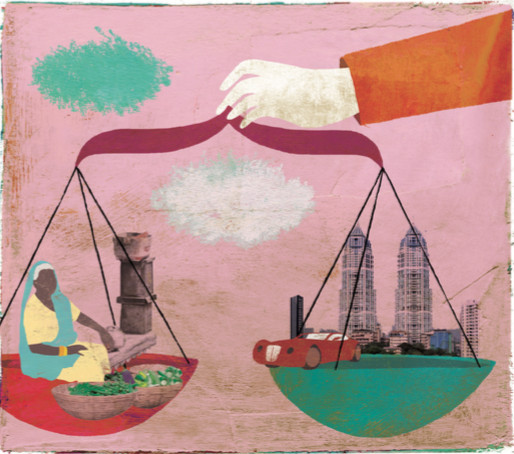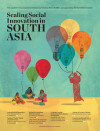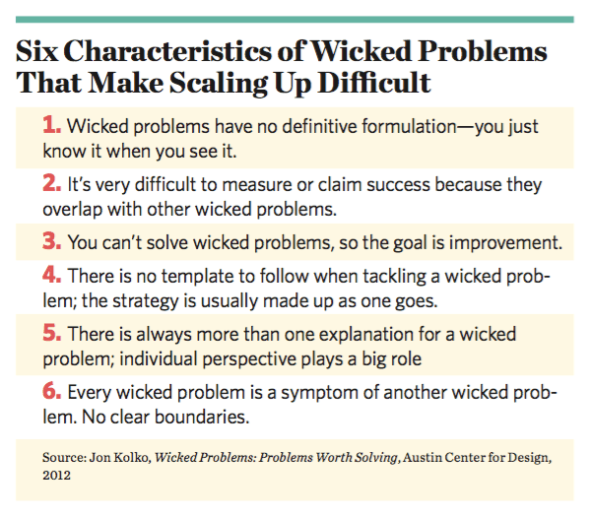
As a field, development is fond of linear approaches to problem solving. But not every social challenge can be codified into incremental, quantifiable goals, as those of us working on rights and justice issues know only too well. Part of the problem is that rights-based issues are “wicked”—that is, they are extremely complex, and their complexities vary by geography and population. (See “Six Characteristics of Wicked Problems That Make Scaling Up Difficult” below.) As such, they defy the increasingly robust models that exist for growing certain development programs, especially those that are designed to scale up in size. And so, although the root cause of poverty is inequity, rights and justice issues often take a back seat to health, sanitation, and education, where needs are more visible and progress is more easily measured.
Scaling Social Innovation in South Asia

This special supplement examines the lessons that the Bangladesh-based NGO BRAC and other leading organizations have learned about scaling up social innovations in the developing world, especially in South Asia.
Several organizations working in South Asia, such as BRAC and Nidan, have had many instructive experiences as they seek to empower the poor. In India, Nidan has helped build some of the largest associations of informal workers in the world, with 621,000 members. Though Bangladesh-based BRAC is best known for its development work, it is also one of the largest providers of human rights and legal aid services in the world. One of its core components is a cadre of “barefoot lawyers” composed of local women who provide information about legal issues to their community. In recent years the program has begun to work on notoriously sticky issues of property rights.
These collective experiences suggest five lessons for other organizations with the same goals.
1. Don’t Assume That Everyone Sees and Feels the Problem
Often, policymakers, donors, and even the affected populations cannot see the relevance of rights to other dimensions of poverty. If that’s the case, creating a shared appreciation of this relationship is a critical starting point. Consider the urban street vendors in India who eke out a living by selling vegetables, garments, and other goods in public places. In its early days, Nidan found that many policymakers and donors saw street vendors as a problem rather than as vital service providers, and therefore the organization put a great deal of energy into changing that perception. One of its initiatives was the creation of a “Street Food Festival” in Patna, Bihar’s capital city, offering an opportunity for all residents to come together to enjoy and appreciate casual cuisine while fostering an appreciation of vendors’ lives and contributions to the city’s fabric.
Even the affected community may not be thinking about the importance of their rights. BRAC’s work with the poor in the 1970s focused largely on “conscientization,” drawing on the work of Paulo Freire and his ideas about empowerment through illumination about the elements of oppression.
2. Start by Learning
Develop a deep understanding of the community and the issues that affect it before championing a “solution.” Nidan began its work through a simple survey of street vendors in Patna. One major finding was the presence of a complex ecosystem of extortion by corrupt municipal corporation officials, policemen, and private contractors. Learning about this helped Nidan appreciate the depth of the problem and develop local and national activities aimed at developing and implementing better policies and legal protection for street vendors.
In Bangladesh, BRAC discovered through surveys that nearly 70 percent of all instances of violence against women stemmed from property-related disputes, and that women’s systematic deprivation of land contributed significantly to poverty and gender inequality. But the organization initially opted not to work on property rights because the cases tended to be complex and could easily exhaust its legal resources. Instead, BRAC focused on land measurement. Local people were trained and certified to provide accurate land measurement at a low cost to settle (and often preempt) land disputes. Although BRAC’s activities did not directly change the justice system, they were a first move in the right direction. BRAC raises awareness about property rights, legal aid clinics, and measurement services through its barefoot lawyers, who lead community-based education for rural women. It also works with local governments to increase their understanding of the property rights issues facing the poor and to encourage effective delivery of services.
Video: Trained by BRAC, land entrepreneurs in Bangladesh are working to ensure poor women’s access to property rights. (Produced by BRAC Social Innovation Lab)
3. Focus on What Needs To Be Scaled Down, Not Up
Often when organizations are scaling, the focus is on addition—providing new inputs and additional activities. When it comes to rights, however, the focus needs to be on reduction—taking away the barriers to justice, or scaling down: Ask “What factors cause oppression or denial of rights, and how can those factors be removed?”
For Nidan, a pivotal realization was that bottom-up mobilization at the city or state level would never be sufficient for transformative change. India’s street vendors needed representation at the national level. In 2003, Nidan helped its street vendor organizations federate under the umbrella of the National Association of Street Vendors of India (NASVI) and helped them gain access to national decision makers.
4. Service Delivery Can Be a Vehicle for Rights
If a community doesn’t trust your intentions and believe that you will be alongside it for as long as the struggle takes, it will be difficult to gain traction. Nidan and BRAC both found that it was easier to mobilize people when they provided other services as well. Clearly, this presents a chicken-and-egg dilemma for groups that want to focus on rights, because it suggests that in order to do so effectively, they may need to devote some attention to the “symptoms” of inequality before they can fight the “disease.”
Certain services make it easier for people to advocate for their rights. For example, most land cases in Bangladesh relate to inheritance, which means that they reflect conflicts within a family. But taking family members to court creates significant stress. BRAC has found that if family members have important basic services, such as health care, they have more courage and ability to take action when they believe they have been treated unfairly on issues like land ownership.
5. Get Decision Makers to Pay Attention
Gloria Steinem said, “Power can never be given, it is taken. The process of taking it is empowerment itself.” Justice and rights inherently relate to power dynamics, access to resources, and vested interests. Attempts to change the status quo are usually met with great resistance and come with risks, both personal and organizational. The life of an Indian street vendor, for example, is brutal. Private contractors and sometimes police extort daily payments and resort to violence when their power is threatened. Once street vendors began working together and sensed strength in their numbers, they began to fight back. Arbind Singh (co-author of this article and founder of Nidan) recalls street vendors standing outside a political leader’s house, or a police station, going beyond mobilization to what he calls mob-ilization.

For the final push to pass legislation protecting street vendors, Arbind asked some of the most experienced and vocal street vendor leaders from Nidan’s earliest work in Bihar to come to Delhi and participate in a hunger strike. In all, 29 street vendor leaders fasted for four days with support from thousands of street vendors across India. On February 19, 2014, Parliament passed the “Street Vendors Act” (the Protection of Livelihood and Regulation of Street Vending).1
BRAC has chosen to coax and support institutional change on politically charged issues, rather than trying to force it. For many, this is a controversial choice. Nevertheless, given the organization’s extensive network of critical social and financial services touching the lives of the poor throughout the country, it has good reasons to be cautious. The organization has also found that effective change is as much about improving the capacity of the public institutions as about generating demand in the grass roots. So BRAC does both. It provides training to local public officials tasked with settling land disputes, and it equips community members with knowledge about the laws and encourages them to demand justice.
No Recipe for Success
History has shown that rights movements often take decades to gain the momentum and power they need to motivate change. Progress happens in spurts and feels opportunistic, but the reality is that the ability to capitalize on these chances as they emerge requires a deep understanding of the issues, trust from the affected community, and an ability to understand how to push effectively for change.
Support SSIR’s coverage of cross-sector solutions to global challenges.
Help us further the reach of innovative ideas. Donate today.
Read more stories by Maria A. May, Faustina Pereira & Arbind Singh.

